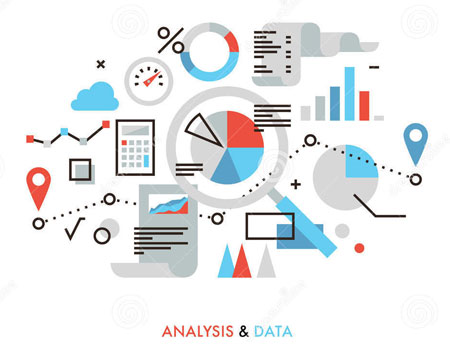We live in interesting times. Marketing, which was considered black magic with advertisers playing grand wizards, is fast becoming a field for technology specialists. Information about individuals is the key nowadays and MLG India provides best data solutions. Integration of data, processes, channels and marketers is already a reality. As their focus is on delivering the right message to the right person at the right time, it requires formats to be tailored to the audience’s physical and virtual locations.
Data is more than just customer name, age and contact, and encompasses a gamut of digital, physical and emotional trails gathered from social media, websites and queries. Organizations map customer journeys, preferences, purchase histories and social media connections, and reach out with personalized offers likely to be accepted immediately. Customers expect brands to be available across all devices and channels. The adage “out of sight, out of mind” fits perfectly in today’s marketing context.
Taming data is not simple
 Data availability is not a constraint. Every customer interaction reveals a large amount of information to servers. Sales transactions accumulate in ERP, customer interactions within the CRM through marketing automation, and data is gleaned through social listening, surveys, downloads, feedbacks and other online activities. Most information is buried deep inside siloed systems and organizations fail to retrieve the moments that matter to personalization. Technological, process and policy paralysis prevent seamless distribution and sharing of data, thus overwhelming marketers.
Data availability is not a constraint. Every customer interaction reveals a large amount of information to servers. Sales transactions accumulate in ERP, customer interactions within the CRM through marketing automation, and data is gleaned through social listening, surveys, downloads, feedbacks and other online activities. Most information is buried deep inside siloed systems and organizations fail to retrieve the moments that matter to personalization. Technological, process and policy paralysis prevent seamless distribution and sharing of data, thus overwhelming marketers.
Digital-savvy companies depend on tech innovation to deliver omni-channel experiences. In today’s world, it involves economical strategies for convergence of social media, physical and cloud, and seamless digitization of front-end interfaces and core legacy systems. Taming data implies all customer interactions are captured, shared and combined to deliver real-time value across channels and devices.
Ensuring de-siloed data sources
Data is sourced from disparate channels like search, social, mobile, crowd-sourcing, transactions and web mining. Data scientists spend 80% of their time re-formatting data from myriad sources. Marketers use nexus systems like data management, tag management and others to combine different data sources, add meta data and present for analysis. The systems help automate reformatting of data for insights. It is important to find the right data integration and management platforms to drive digital marketing efforts. “Data as a service” interprets real-time data and enhances your own marketing database for effective multi-channel campaigns.
Data is an opportunity
One billion gigabytes of data with staggering variety is created each day. The journey of data from descriptive to predictive is far from complete. A large majority of businesses use data for retrospective purposes, which may yield results, but cannot facilitate proactive marketing. Real-time action like triggering an email, just after a customer abandons the shopping cart, is becoming increasingly common. But a more progressive step is making decisions based on predictive and prescriptive data. It helps to develop strategies and perform actions in the most realistic way possible.
Closing thoughts
Marketing is evolving not just in digital, but in the brick-and-mortar space as well. Data is the essential element. It’s correct that enormous amounts of customer, financial and transactional data are buried deep in siloed systems, but direct marketing tools are already being used to aggregate and analyse the data for positive impact. Marketing is turning into a discipline where decisions will be directly mapped to results without ambiguity.


